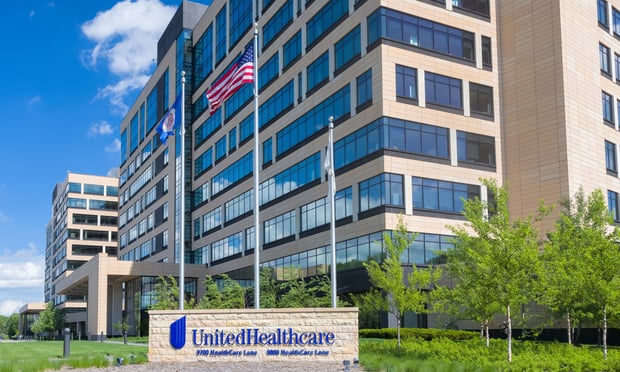 The pandemic has already forced some positive change, such as improved access to telemedicine, but there is still so much more to be done. (Photo: Shutterstock)
The pandemic has already forced some positive change, such as improved access to telemedicine, but there is still so much more to be done. (Photo: Shutterstock) The chaos, concern and stress of the coronavirus pandemic has weighed on us all in a range of ways emotionally, physically and mentally. Despite these new complications, so many of us have found ourselves embracing certain aspects of life that are reminiscent of the more simple lives our parents and grandparents experienced. Between the home improvement projects, trendy baking experiments, and camping in the backyard, this moment is reminding us how to stay in, stay local, spend more time with our families, and reevaluate what matters.
In our typical pre-pandemic routines, we sacrificed quality in the name of efficiency. Like many of you, I excelled at living life in the driver's seat of the family car — hitting fast food drive-thrus to avoid grocery shopping, cooking and clean up, shuttling kids to endless activities while squeezing in back-to-back conference calls, and relegating my health to the backseat — even as a professional who specializes in health care policy. Over these past few difficult months, a "new normal" has taken hold, which has required so many of us, myself included, to reevaluate what matters, core to which, is our health.
Recommended For You
Related: Milk, eggs and a health checkup
As mentioned earlier, I have worked in the health care space for over 15 years on behalf of physicians, insurance companies, and now a health care technology startup. In a time that has forced me to step out of the endless carpool loop and into a responsibly homebound lifestyle, I find myself contemplating my radically different days and the value of the work I do.
At first, I resisted the slow pace and do-it-yourself aspects of quarantine life. I realized that I had become numb and had even begun to perpetuate the nonstop chaos and complication of our pre-pandemic schedules. As I reflect on these changes, I can appreciate the simplicity that has been added to my life. So I wonder, what else would benefit from this dramatic shift, this forced reconfiguration. Specifically, how does health care go "back to basics"?
There is nothing simple, basic, or even common sense about our current system. Health care delivery and payment are fractured, unsustainable, and stagnant. Wait times are longer, bills are larger, doctors are buried in paperwork and red tape, patients are frustrated, and consumers are kept deep in the dark about costs, fees, and options.
All of these factors result in an incredible amount of over-complication and waste. Administrative staff working in the health care industry spend, on average, 36 hours per workweek just on billing matters. The administrative costs associated with health care in the U.S. are the highest in the world, because of how complicated and time-consuming they are. Of course, these costs are passed directly to the consumer, who often pay more money for worse care.
Volumes have been written about these problems by people far more well-versed in this topic than me. But what do we do about it?
The pandemic has already forced some positive change, such as improved access to telemedicine, but there is still so much more to be done.
How we pay for health care can be vastly simplified. The direct primary care and virtual primary care models are great examples of how doctors and patients are breaking through the layers of complexity and third party interference to resurrect the business model used in almost every other sector of our economy, one that emphasizes the patient (consumer), upfront pricing, and a quality product or experience. Let's resist the urge to overregulate this concept that is delivering compelling results and savings.
Our government needs to remove the regulatory barriers to innovation in health care. From rideshare to delivery apps, the sharing economy has fundamentally shifted the way most Americans live. The health care sharing economy can do this, as well. The health care sharing economy welcomes new market entrants who focus on technology and characteristics that unite all active health care consumers, and it will serve a workforce that is tired of surrendering critical health care decisions to employers, however well-intentioned. We should also expand the availability and functionality of HSAs and other tax-advantaged vehicles to invest in health care that rewards healthy lifestyles and engaged patients.
And finally, we need to demand price transparency in health care. Hospitals and health insurers should be required to publish their rates and discounted cash prices to allow patients the information and clarity to make smart choices. For example, cash payment is becoming more commonplace as rates are often lower, and Medical Cost Sharing Communities, among other entities, empower their members to make value-driven choices based on need, not on network.
The simple concepts of transparency, innovation, and empowerment will make our system better, and more Americans healthier. Let's entrust people with the tools they need to be informed and regain control of their health care.
Jenny Aghamalian is vice president of public affairs at Sedera. She has more than 15 years of experience in the space including a long stint at Humana.
Read more:
© 2025 ALM Global, LLC, All Rights Reserved. Request academic re-use from www.copyright.com. All other uses, submit a request to asset-and-logo-licensing@alm.com. For more information visit Asset & Logo Licensing.







